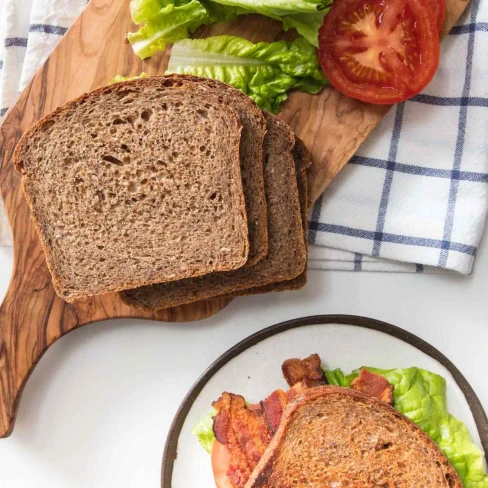Multigrain Sandwich Bread Recipe
Prep Time
15m
Cook Time
45m
Total Time
1h
This multigrain sandwich bread recipe combines the nutty flavors of flax seed, chia seeds, rolled oats, and wheat germ with traditional whole wheat flour to create a hearty and flavorful loaf. With a touch of brown sugar for sweetness and a hint of oil for richness, it's perfect for sandwiches or toast.
Ingredients
Steps
Nutrition Facts
Ingredients
(Servings:
12)
Scale
Scale
For The Grains
For The Dough
Steps
View steps on seriouseats.com or by saving the recipe to your
personal library.
Register for free to start
saving recipes.
Nutrition Facts
Nutrition facts are based on 1 serving. If servings is not specified, 6 is assumed for the total
recipe.
-
Calories253kcal12%
-
Fat9g0%
-
Saturated Fat1g0%
-
Carbohydrates41g2%
-
Fiber9g0%
-
Sugar3g0%
-
Protein9g0%
-
Cholesterol0mg0%
-
Sodium231mg11%
Percent Daily Values are based on a 2,000 calorie diet.
